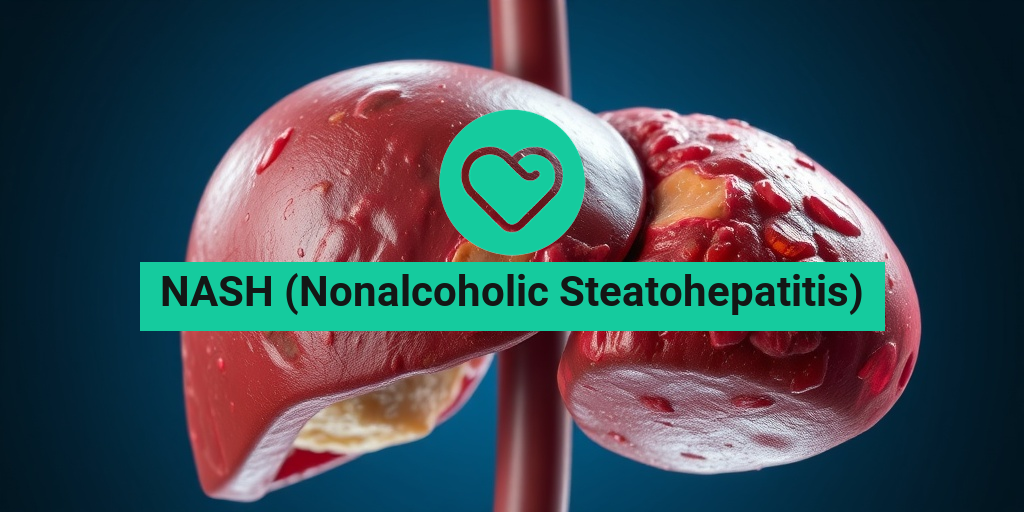What Is Heart Health?
Heart health refers to the overall condition of your heart and its ability to function effectively. It encompasses various factors, including the heart’s structure, its rhythm, and how well it pumps blood throughout the body. Maintaining a healthy heart is crucial for overall well-being, as it plays a vital role in delivering oxygen and nutrients to your organs and tissues.
Several factors contribute to heart health, including:
- Blood Pressure: High blood pressure can strain the heart and lead to serious complications.
- Cholesterol Levels: Elevated cholesterol can lead to plaque buildup in the arteries, increasing the risk of heart disease.
- Heart Rate: A normal resting heart rate is essential for optimal heart function.
- Blood Sugar Levels: High blood sugar can damage blood vessels and nerves that control the heart.
To assess your heart health, healthcare professionals often recommend regular check-ups, including blood tests and physical examinations. Understanding your heart health is the first step toward making informed lifestyle choices, particularly when it comes to exercising for a healthy heart.
Benefits of Exercise for the Heart
Engaging in regular physical activity is one of the most effective ways to promote heart health. The benefits of exercise extend beyond just physical fitness; they significantly impact your cardiovascular system. Here are some key benefits of exercising for a healthy heart:
1. Strengthens the Heart Muscle
Just like any other muscle in your body, your heart becomes stronger with regular exercise. Activities such as running, swimming, or cycling help improve the heart’s efficiency, allowing it to pump more blood with each beat. This increased efficiency can lead to a lower resting heart rate, which is a sign of good heart health.
2. Improves Circulation
Exercise enhances blood circulation, ensuring that oxygen and nutrients are delivered effectively to all parts of the body. Improved circulation can help reduce the risk of heart disease and stroke, making it essential for maintaining a healthy heart.
3. Lowers Blood Pressure
Regular physical activity can help lower blood pressure by improving the elasticity of blood vessels and promoting better blood flow. This is particularly beneficial for individuals with hypertension, as it can significantly reduce the risk of heart-related complications.
4. Reduces Cholesterol Levels
Exercise can help raise levels of high-density lipoprotein (HDL) cholesterol, often referred to as “good” cholesterol, while lowering low-density lipoprotein (LDL) cholesterol, or “bad” cholesterol. This balance is crucial for preventing plaque buildup in the arteries, which can lead to heart disease.
5. Aids in Weight Management
Maintaining a healthy weight is vital for heart health. Regular exercise helps burn calories and build muscle, making it easier to achieve and maintain a healthy weight. This is particularly important as obesity is a significant risk factor for heart disease.
6. Reduces Stress and Anxiety
Exercise is a natural stress reliever. Physical activity stimulates the release of endorphins, which are chemicals in the brain that act as natural painkillers and mood elevators. Reducing stress and anxiety can have a positive impact on heart health, as chronic stress is linked to heart disease.
7. Enhances Overall Well-Being
Regular exercise not only benefits your heart but also improves your overall quality of life. It can boost your energy levels, improve sleep quality, and enhance your mood. When you feel good physically and mentally, you’re more likely to make healthier lifestyle choices that further support heart health.
Incorporating exercise into your daily routine doesn’t have to be daunting. Start with activities you enjoy, whether it’s walking, dancing, or joining a fitness class. Aim for at least 150 minutes of moderate aerobic activity each week, as recommended by health experts.
For personalized advice and evidence-based health answers, consider visiting Yesil Health AI. They provide valuable resources to help you understand your heart health better and guide you on your fitness journey.
In conclusion, exercising for a healthy heart is not just a recommendation; it’s a necessity for maintaining optimal heart health. By making exercise a regular part of your life, you can enjoy the numerous benefits it offers and significantly reduce your risk of heart disease. So, lace up those sneakers and get moving! 🏃♂️❤️

Types of Heart-Healthy Exercises
When it comes to exercising for a healthy heart, variety is key! Engaging in different types of exercises not only keeps your routine interesting but also targets various aspects of heart health. Here are some effective types of heart-healthy exercises you can incorporate into your fitness regimen:
Aerobic Exercises
Aerobic exercises are fantastic for improving cardiovascular endurance and overall heart health. These activities increase your heart rate and promote better blood circulation. Some popular aerobic exercises include:
- Walking: A simple yet effective way to get moving. Aim for brisk walks to elevate your heart rate.
- Running or Jogging: Great for those looking to boost their stamina and burn calories.
- Cycling: Whether on a stationary bike or outdoors, cycling is a low-impact option that’s easy on the joints.
- Swimming: A full-body workout that’s gentle on the body while providing excellent cardiovascular benefits.
- Dancing: Fun and engaging, dancing can be a great way to get your heart pumping!
Strength Training
While aerobic exercises are crucial, strength training also plays a vital role in heart health. Building muscle helps improve metabolism and can lower blood pressure. Consider incorporating:
- Weight Lifting: Using free weights or machines to build strength.
- Bodyweight Exercises: Push-ups, squats, and lunges can be done anywhere and are effective for building muscle.
- Resistance Bands: These are portable and versatile tools for strength training.
Flexibility and Balance Exercises
Don’t overlook the importance of flexibility and balance exercises. These can enhance your overall fitness and reduce the risk of injury. Some options include:
- Yoga: Promotes flexibility, balance, and relaxation, which can help reduce stress—a known factor in heart disease.
- Pilates: Focuses on core strength and stability, improving overall body function.
High-Intensity Interval Training (HIIT)
HIIT is a popular workout method that alternates between short bursts of intense activity and periods of rest or lower-intensity exercise. This type of training can be very effective for improving heart health in a shorter amount of time. Just be sure to consult with a healthcare provider if you have any existing heart conditions before starting HIIT.
Recommended Exercise Duration
Now that you know the types of exercises that can benefit your heart, let’s discuss how long you should be exercising to achieve optimal heart health. The American Heart Association recommends the following guidelines:
Weekly Exercise Goals
For most adults, the goal should be:
- 150 minutes of moderate-intensity aerobic exercise each week, or
- 75 minutes of vigorous-intensity aerobic exercise each week.
This can be broken down into manageable sessions. For example, you could aim for 30 minutes of moderate exercise five days a week. 🏃♂️
Incorporating Strength Training
In addition to aerobic exercise, it’s recommended to include strength training exercises at least two days a week. This can help improve muscle strength and endurance, which is beneficial for heart health.
Listening to Your Body
It’s essential to listen to your body and adjust your exercise routine based on how you feel. If you’re just starting out or have any health concerns, consider consulting with a healthcare professional to tailor a program that suits your needs. Remember, exercising for a healthy heart should be enjoyable and sustainable! 😊
Whether you’re walking, swimming, or lifting weights, the key is to stay active and make heart health a priority. Your heart will thank you! ❤️
![]()
Exercise and Heart Disease Prevention
When it comes to maintaining a healthy heart, regular exercise plays a pivotal role. Engaging in physical activity not only strengthens your heart but also reduces the risk of heart disease. In fact, studies have shown that individuals who exercise regularly have a significantly lower risk of developing cardiovascular conditions.
How Exercise Benefits Heart Health
Exercise offers numerous benefits that contribute to a strong and healthy heart. Here are some key advantages:
- Improves Blood Circulation: Regular physical activity enhances blood flow, ensuring that oxygen and nutrients reach your heart and other vital organs efficiently.
- Reduces Blood Pressure: Exercise helps lower blood pressure levels, which is crucial for preventing heart disease.
- Controls Weight: Maintaining a healthy weight through exercise reduces the strain on your heart and lowers the risk of heart-related issues.
- Boosts Cholesterol Levels: Physical activity can increase levels of high-density lipoprotein (HDL) cholesterol, the “good” cholesterol, while lowering low-density lipoprotein (LDL) cholesterol, the “bad” cholesterol.
- Enhances Heart Function: Regular exercise strengthens the heart muscle, improving its efficiency and overall function.
Best Exercises for a Healthier Heart
Incorporating a variety of exercises into your routine can maximize heart health benefits. Here are some of the best workouts for a healthy heart:
- Aerobic Exercises: Activities like walking, jogging, cycling, and swimming are excellent for cardiovascular health. Aim for at least 150 minutes of moderate aerobic activity each week.
- Strength Training: Incorporating resistance exercises at least twice a week can help build muscle and improve heart health.
- Flexibility and Balance Exercises: Yoga and stretching can enhance overall fitness and reduce stress, which is beneficial for heart health.
Remember, it’s essential to choose activities you enjoy to stay motivated and consistent. Whether it’s dancing, hiking, or playing a sport, find what works for you! 🏃♂️❤️
Signs of Overexertion
While exercise is crucial for a healthy heart, it’s equally important to listen to your body. Overexertion can lead to serious health issues, especially for those with pre-existing heart conditions. Here are some signs to watch for:
Physical Symptoms of Overexertion
Recognizing the signs of overexertion can help you prevent potential heart problems. Look out for the following symptoms:
- Shortness of Breath: If you find it difficult to breathe during or after exercise, it may be a sign that you’re pushing yourself too hard.
- Chest Pain or Discomfort: Any pain or discomfort in the chest area should be taken seriously. If this occurs, stop exercising immediately and consult a healthcare professional.
- Dizziness or Lightheadedness: Feeling faint or dizzy can indicate that your body is not getting enough oxygen, which can be dangerous.
- Excessive Fatigue: While some fatigue is normal after a workout, extreme tiredness can signal overexertion.
- Increased Heart Rate: Monitoring your heart rate is essential. If it remains elevated long after your workout, it may indicate that you’ve overdone it.
How to Prevent Overexertion
To ensure that your exercise routine remains safe and effective, consider these tips:
- Start Slow: If you’re new to exercise, gradually increase the intensity and duration of your workouts.
- Stay Hydrated: Drink plenty of water before, during, and after exercise to maintain hydration levels.
- Listen to Your Body: Pay attention to how you feel during workouts. If something doesn’t feel right, take a break.
- Consult a Professional: If you have a history of heart problems, consult with a healthcare provider before starting any new exercise regimen.
By being aware of the signs of overexertion and taking preventive measures, you can enjoy the benefits of exercise while keeping your heart healthy and strong! 💪❤️

Creating a Heart-Healthy Routine
When it comes to exercising for a healthy heart, establishing a consistent routine is essential. A well-structured exercise plan not only strengthens your heart but also improves overall well-being. Here’s how to create a heart-healthy routine that fits your lifestyle.
Understanding Your Heart Health
Before diving into a workout regimen, it’s crucial to assess your current heart health. Consider factors such as:
- Age: As you age, your heart may require more attention.
- Medical History: Previous heart conditions or family history can influence your exercise choices.
- Current Fitness Level: Start where you are; if you’re new to exercise, begin with low-impact activities.
Choosing the Right Exercises
To promote a strong healthy heart, incorporate a mix of cardiovascular, strength, and flexibility exercises into your routine:
- Cardiovascular Exercises: Activities like walking, jogging, cycling, and swimming are excellent for heart health. Aim for at least 150 minutes of moderate aerobic activity each week. 🏃♂️
- Strength Training: Incorporate strength training exercises at least twice a week. This can include weight lifting, resistance bands, or body-weight exercises like push-ups and squats.
- Flexibility and Balance: Don’t forget to include stretching and balance exercises, such as yoga or tai chi, to enhance overall fitness and prevent injuries.
Setting Realistic Goals
Setting achievable goals is vital for maintaining motivation. Consider the SMART criteria:
- Specific: Define what you want to achieve (e.g., “I will walk for 30 minutes, five days a week”).
- Measurable: Track your progress to stay motivated.
- Achievable: Set goals that are challenging yet attainable.
- Relevant: Ensure your goals align with your heart health objectives.
- Time-bound: Set a timeline for your goals to create a sense of urgency.
Listening to Your Body
As you embark on your heart-healthy journey, it’s essential to listen to your body. If you experience any discomfort or unusual symptoms, such as chest pain or shortness of breath, consult a healthcare professional. Remember, exercising for a healthy heart should feel invigorating, not exhausting!
Nutrition and Heart Health
While exercise is a cornerstone of heart health, nutrition plays an equally vital role. A balanced diet can significantly impact your heart’s well-being. Here’s how to nourish your heart effectively.
Heart-Healthy Foods
Incorporating the right foods into your diet can help lower cholesterol levels, reduce blood pressure, and maintain a healthy weight. Focus on these heart-healthy options:
- Fruits and Vegetables: Aim for a variety of colors on your plate. Berries, leafy greens, and citrus fruits are particularly beneficial. 🍓🥦
- Whole Grains: Choose whole grains like brown rice, quinoa, and whole wheat bread over refined grains.
- Healthy Fats: Incorporate sources of unsaturated fats, such as avocados, nuts, seeds, and olive oil, while limiting saturated and trans fats.
- Lean Proteins: Opt for fish, poultry, beans, and legumes instead of red and processed meats.
Portion Control and Mindful Eating
Even healthy foods can contribute to weight gain if consumed in large quantities. Practice portion control by:
- Using Smaller Plates: This can help trick your brain into feeling satisfied with less food.
- Eating Slowly: Take your time to enjoy each bite, allowing your body to recognize when it’s full.
- Staying Hydrated: Sometimes thirst is mistaken for hunger. Drink plenty of water throughout the day.
Limiting Unhealthy Choices
To support your heart health, it’s crucial to limit certain foods and habits:
- Reduce Sodium Intake: High sodium levels can lead to high blood pressure. Aim for less than 2,300 mg per day.
- Limit Added Sugars: Excess sugar can contribute to weight gain and heart disease. Check labels for hidden sugars.
- Avoid Tobacco and Excessive Alcohol: Both can have detrimental effects on heart health.
By combining a heart-healthy exercise routine with nutritious eating habits, you can significantly improve your heart health and overall quality of life. Remember, every small step counts towards a healthier heart! ❤️

Frequently Asked Questions about Exercising for a Healthy Heart
What types of exercises are best for heart health?
Engaging in a variety of exercises can significantly benefit your heart. Some of the best workouts for a healthy heart include:
- Aerobic exercises: Activities like walking, jogging, cycling, and swimming help improve cardiovascular endurance.
- Strength training: Incorporating weights or resistance bands can enhance overall fitness and support heart health.
- Flexibility exercises: Yoga and stretching can improve circulation and reduce stress, which is beneficial for heart health.
How often should I exercise for a healthy heart?
To maintain a strong, healthy heart, aim for at least 150 minutes of moderate aerobic activity or 75 minutes of vigorous activity each week. Additionally, include strength training exercises at least twice a week.
Can exercise help with existing heart problems?
Yes, exercise can help improve heart health even for those with existing heart conditions. However, it is crucial to consult with a healthcare professional before starting any exercise program to ensure safety and effectiveness.
Is my heart healthy enough for exercise?
If you have concerns about your heart health, it’s essential to consult with a healthcare provider. They can assess your condition and recommend appropriate exercises tailored to your needs.
What is the ideal heart rate during exercise?
For optimal heart health, aim for a target heart rate of 50-85% of your maximum heart rate during exercise. A simple way to estimate your maximum heart rate is to subtract your age from 220. Monitoring your heart rate can help ensure you are exercising within a safe and effective range.
Should I exercise if I have a bad heart?
While exercise can be beneficial for heart health, those with heart issues should consult a healthcare professional before starting any exercise regimen. They can provide guidance on safe activities and intensity levels.
Does exercise really help heart health?
Absolutely! Regular physical activity is proven to strengthen the heart, improve circulation, lower blood pressure, and reduce the risk of heart disease. Incorporating exercise into your routine is a vital step towards maintaining a healthy heart. ❤️




